|
Several explosive materials were used by the fighting nations during WW1, including :
German name |
French name |
British name |
Type of explosive |
Power |
Stability |
Remarks |
SchiessPulver |
Poudre noire |
Gunpowder |
Exploding |
Moderate |
Inflammable, explodes under a flame, a primer or a spark action. |
Used in artifices, fuzes pyrotechnics, and in old explosive shells. Different variants in granulometry and composition. |
Fulminate de mercure |
Fulminate of mercury |
Detonating |
Very high |
Highly unstable, detonates on shocks, friction or heat. |
Produces a violent flash but not hot and long enough to burst gunpowder or a stable explosive. Used as a primer or a detonator in shells, but usually in association with an unstable explosive filled exploder (or gaine). |
|
Nitroglycérine |
Nitroglycerine |
Detonating |
Very high |
Highly unstable, detonates on shocks, blows, heat or even by sun decomposition into even more unstable components. |
Used for manufacturing of more stable explosives and propellants. |
|
Granatfüllung 88 |
Acide Picrique or Mélinite |
Picric Acid or Lyddite (fondu) |
Detonating |
Very high |
Unstable. Detonates under the action of a blow, a primer or a spark. Forms an very unstable and self-detonating picrate salts when in contact with metals. |
Usual use in expolders ('gaines'), or in shells (molten condition) in association with an exploder. |
Füllpulver 02 |
Tolite or TNT |
Trinitrotoluene or Trotyl (TNT) |
Detonating |
High, slightly lower than picric acid |
Stable, cannot detonate under the action of a flame nor thye heat or a chemical reaction with metals. Needs a direct and powerful hit to detonate, or a detonator (f.i. fulminate of mercury) |
|
Füllpulver 60/40 |
60/40 Amatol |
Detonating |
High |
Stable, but less than TNT |
Mix of 60% TNT and 40% ammonium nitrate |
|
Tetryl |
Pyronite |
Tetryl or Composition Exploding |
Detonating |
Very high, higher than picric acid |
Unstable |
Used as a primer, a detonator, or relays in fuzes. |
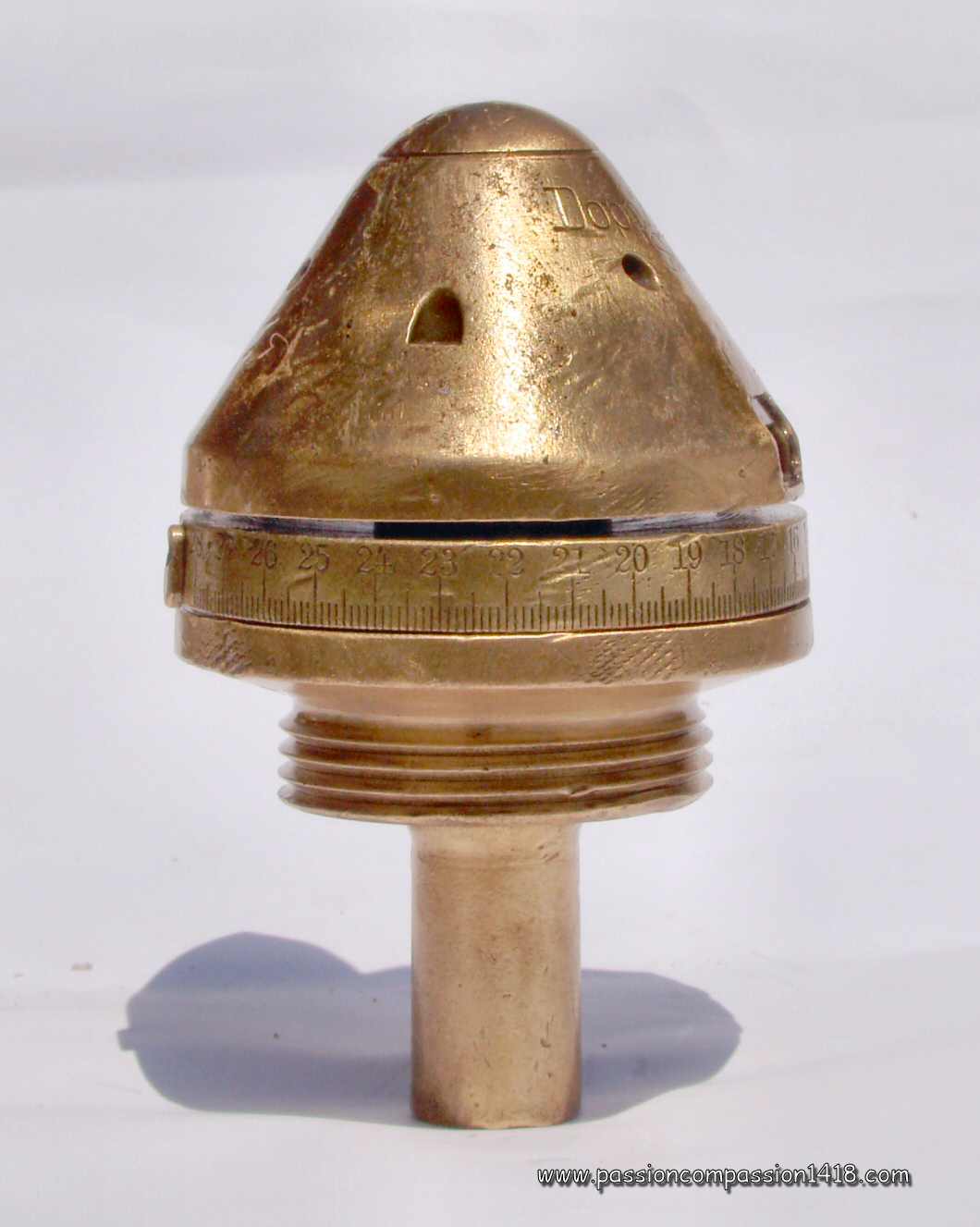 |
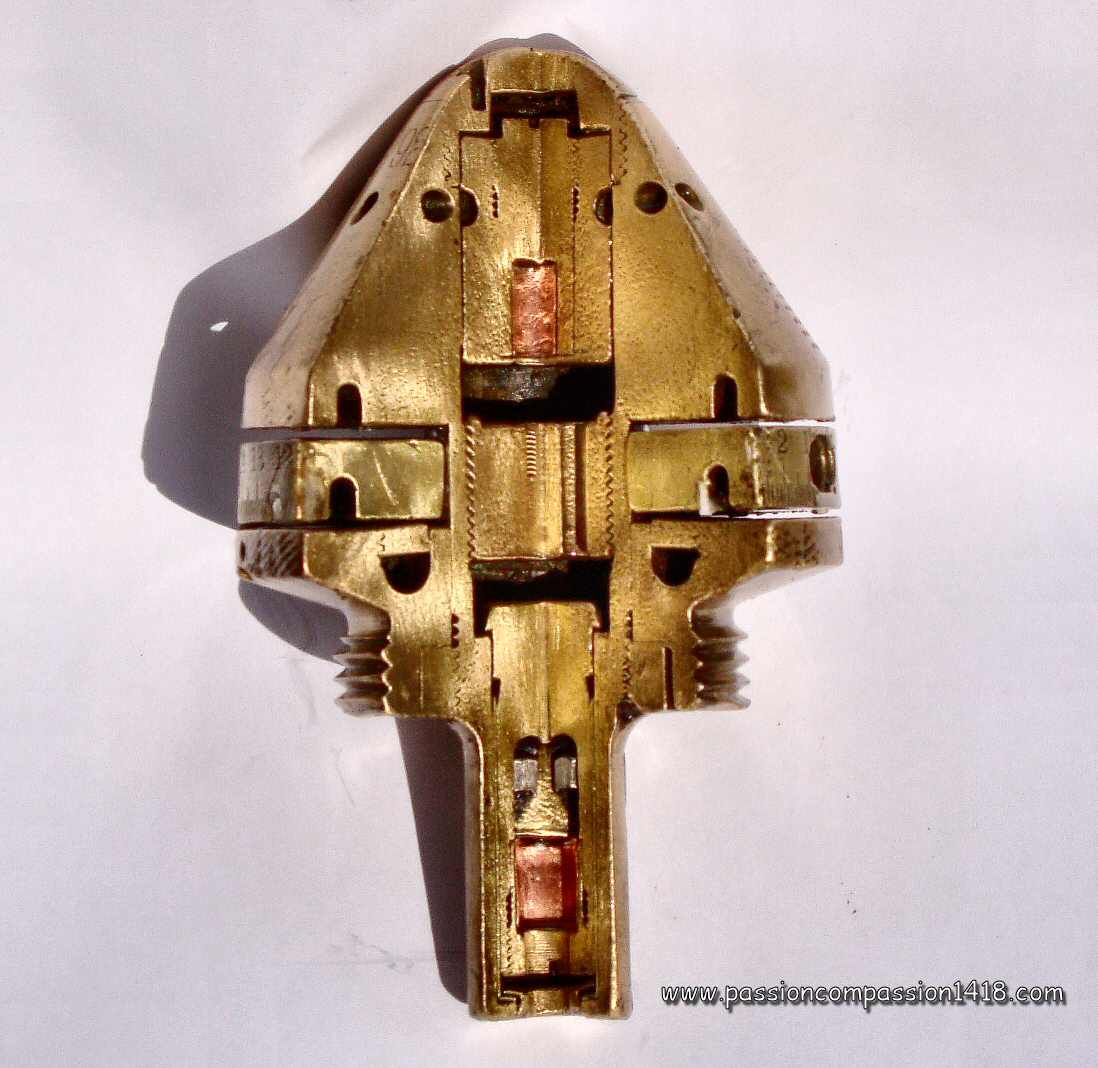 |
| German time and percussion fuze Dopp Z 92. The cut-through allows to observe the internals of the sophisticated mechanical and pyrotechnic system. | |
The 'main types of artillery fuzes' in use during WW1 and the 'fuzes used by the different fighting nations' of WW1 are the topic of specific and detailed sections of this website, that can be easily accessed clicking on these links.
In August 1914, the shrapnel shells were the main ammunitions of the field artillery. Designed to burst right over the ennemy troops by the means of a specific time setting device (time fuze), they were spreading an deadly lead bullets and steel fragments rain while producing a smoke cloud that allowed the gunners to tune their aiming.
Two main types of shrapnel shells existed in 1914 ; the fragmentation shells and the more modern shrapnel shells.
Most of these ammunitions and their associated time fuzes had disappeared from the battlefields pby the end of the war. They were replaced by high explosive fuzes mounted with super-quick direct action fuzes, easier to manufacture, needing little to no settings by the less and less experimented gunners, and much more effective particularly against moderately entrenched troops.

|
||
|
Inner organisation of a French shrapnel shell |
||
The high explosive and perforation shells have been designed in order to burst when hitting their target (but also in flight, for high explosive shells), under the action of a powerful and large quantity of inner explosive charge. Their thick steel walls were producing deadly fragments, and the charge burst a shock effect much larger than the fragmentation shells could ever do.
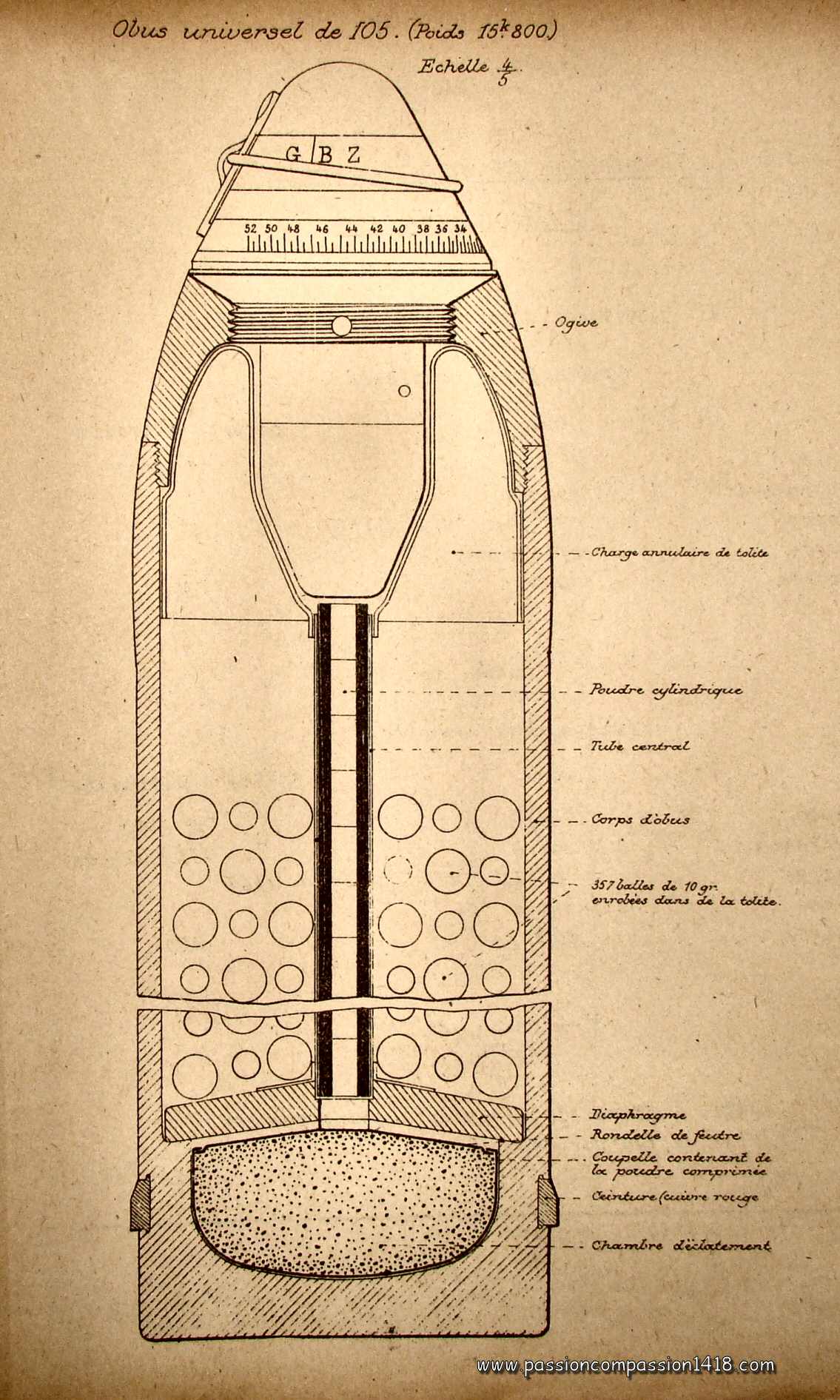 |
The early XXth century conflicts and war tactics demonstrated before 1914 what would be evident just some months after august 1914, that is an increasing need of fieldguns ammunitions more powerful than the usual shrapnel shells, that prooved just good enough in percussion mode when hitting light shelters (bricks, wood, earth, etc...). In order to improve the shells destruction behavior, better explosive properties were needed. This is how the German Army designed a 'Universal shell' ('Einheitsgeschoss') before the war, and used it in the early stages of the conflict. This shell was organized like a shrapnel shell but the resin mass usually surronding the bullets was replaced by TNT for a better explosive effect. Like many technical compromises, this projectile never gave full satisfaction neither as a shrapnel shell, nor as an explosive shelle, and was gradually abandoned. Moreover, it needed a very sophisticated time and percussion fuze ('KZ11' ou 'HZ05') able to order the multiple functions of the ammunition. |
|
| Wartime scheme of the German universal shell. | ||
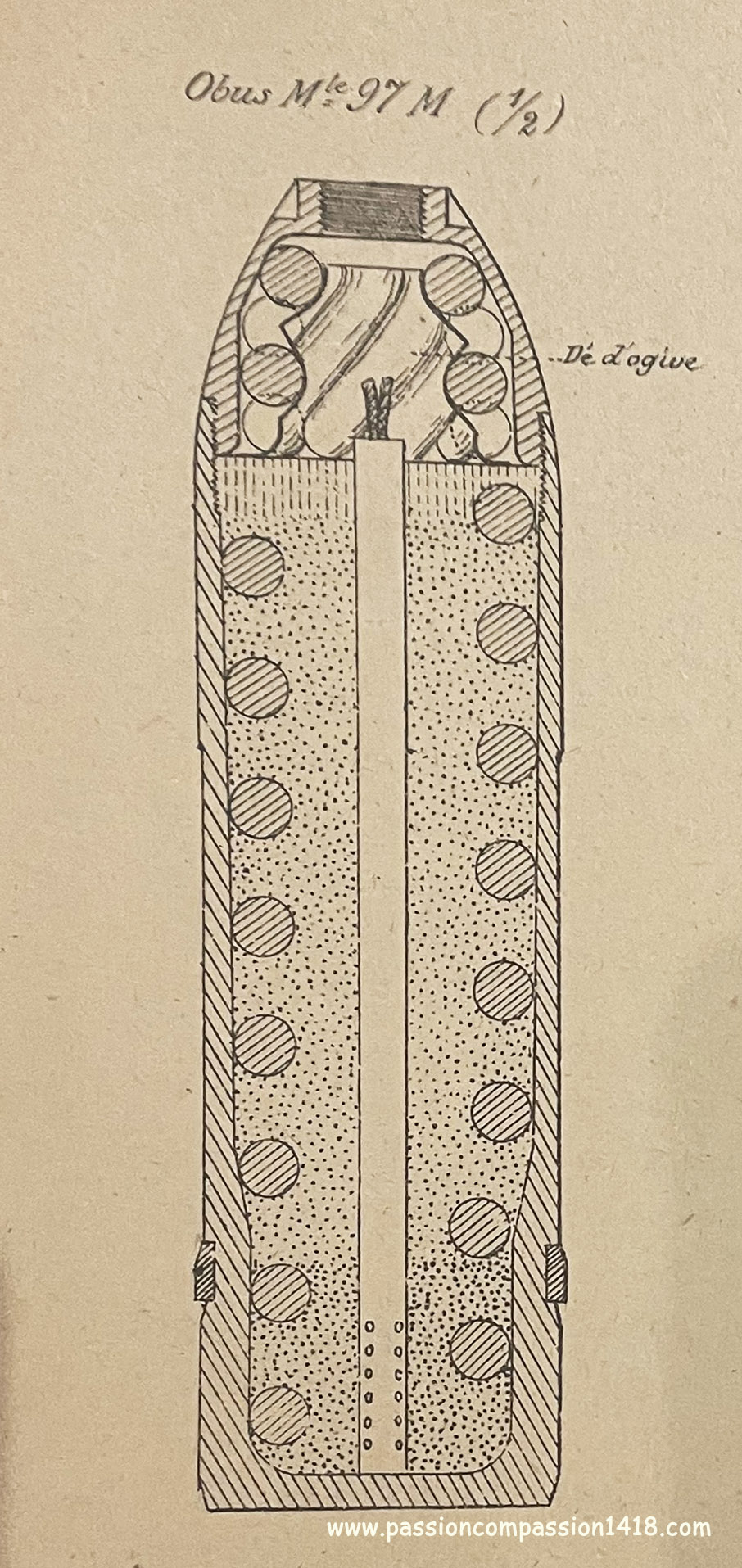 |
France had a similar experience, equally short and disappointing, with their 'Robin shell' also named 'Mixed charge shrapnel shell', that did not have a bottom chamber for the rear burst charge. |
|
| Wartime scheme of the French Robin shell. | ||
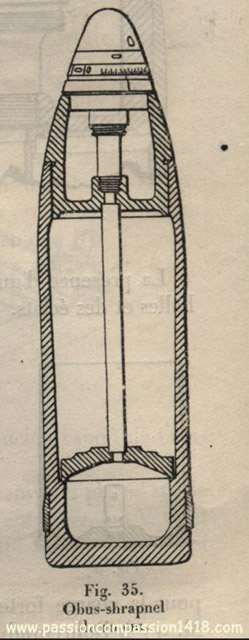 |
The Austro-Hungarians adopted an even different concept of universal shell, called the 'SchrapnellGranate' or 'Obus Schrapnell'. It closely resembled a conventional bullet shell, with a powder chamber in the base and a propellant diaphragm and axial flame transmission tube.
|
|
| Wartime scheme of the Austrian SchrapnellGranate shell. |
Specialized projectiles were used during the conflict. Their exhaustive list would be pretty long, but some of them will stay forever sadly famous.
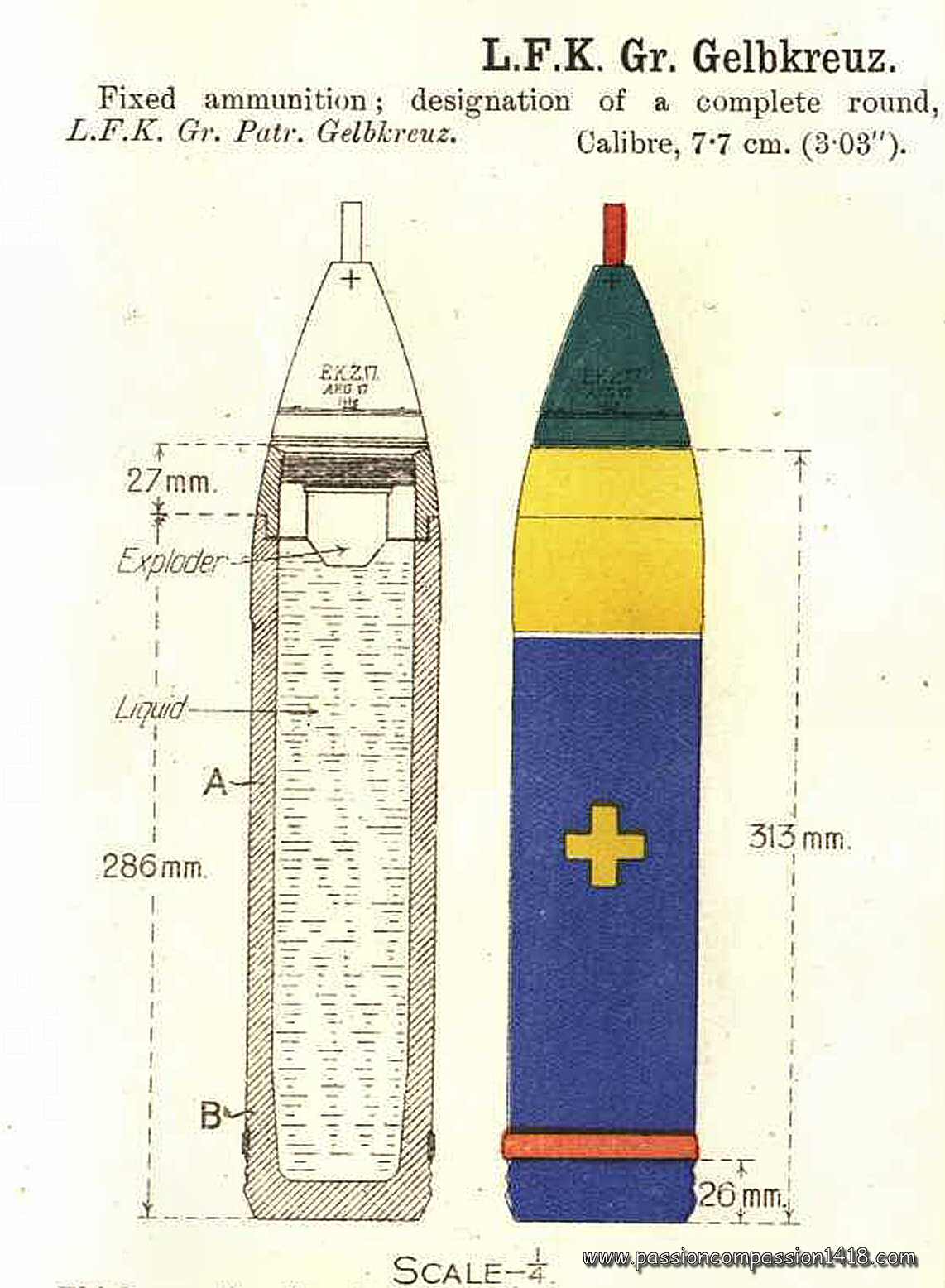
|
The gaz, suffocating or tear shells, were based on the same kind of design as the incendiary shells, but diepersed toxic or irritating material when hitting the ground. These shells were often made of a double envelope system : the inner envelope containing the agressive liquid could be made of glass or thin steel plate. In other designs, the toxic material was contained inside a glass bottle that was broken by the shock of landing, simultaneously with the shell casing dismantling. These shells were most often used with 'superquick' fuzes, so that the shell burst occurs over the ground. See this excellent website for an extensive presentation of the WW1 gaz war history and material : 'La Guerre des Gaz' |
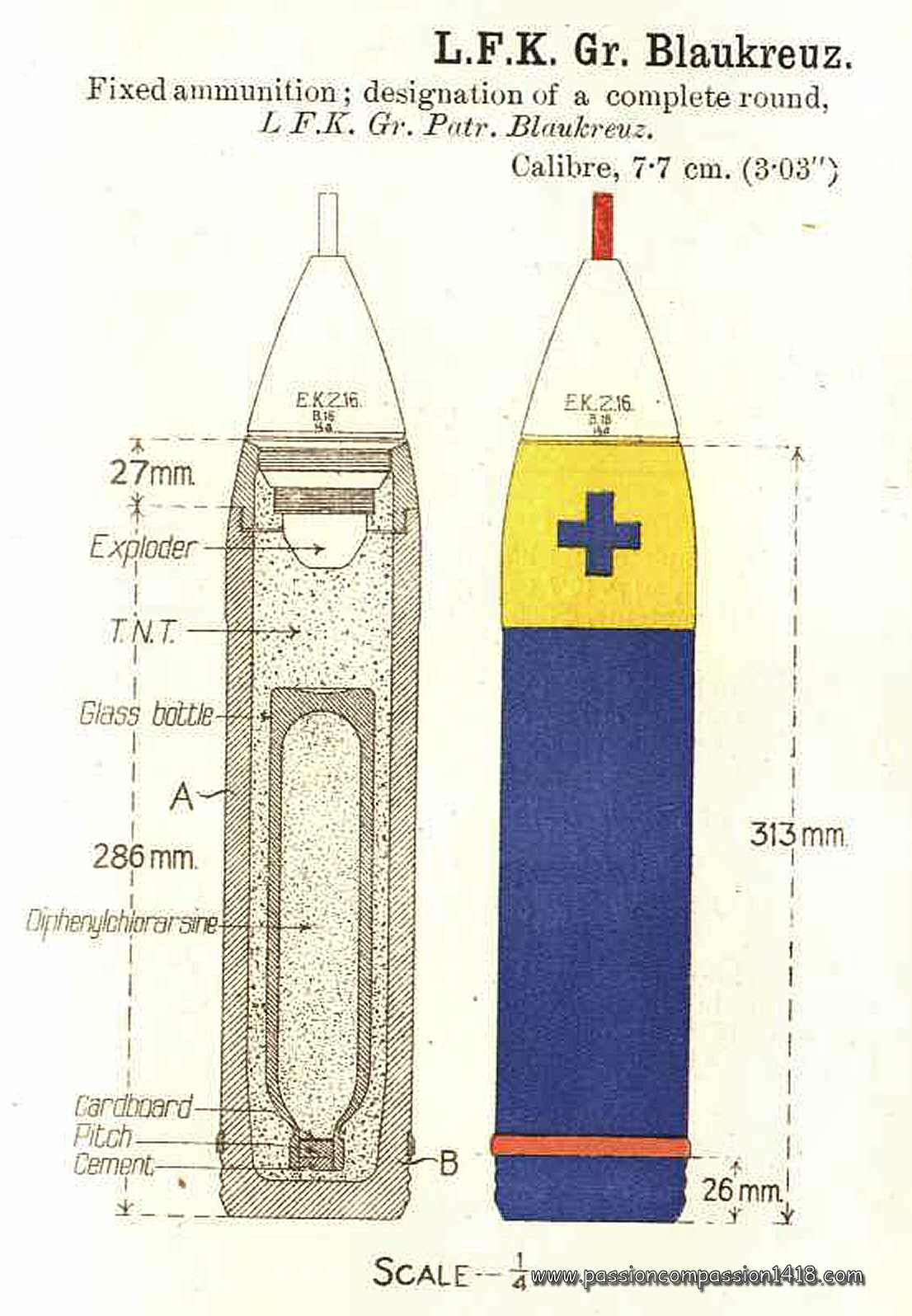
|
| Wartime scheme of the German 7.7cm 'Yellow cross' shell. Toxic material directly in contact with the shell walls. | Wartime scheme of the German 7.7cm 'Yellow cross' shell, with the toxic liquid contained into a glass bottle. | |

|
||
| German gaz shell glass bottle container | ||
Specific ammunitions were in use for the Trench Artilley weapons, due to their close range mission and the partiular balistic conditions of their launching.